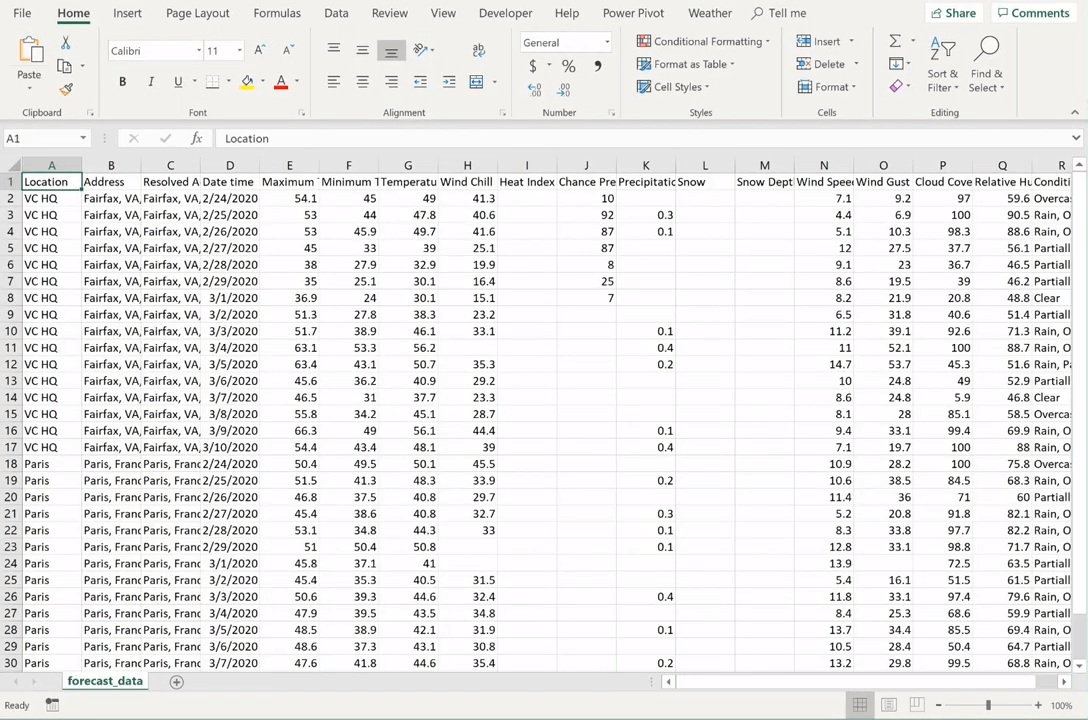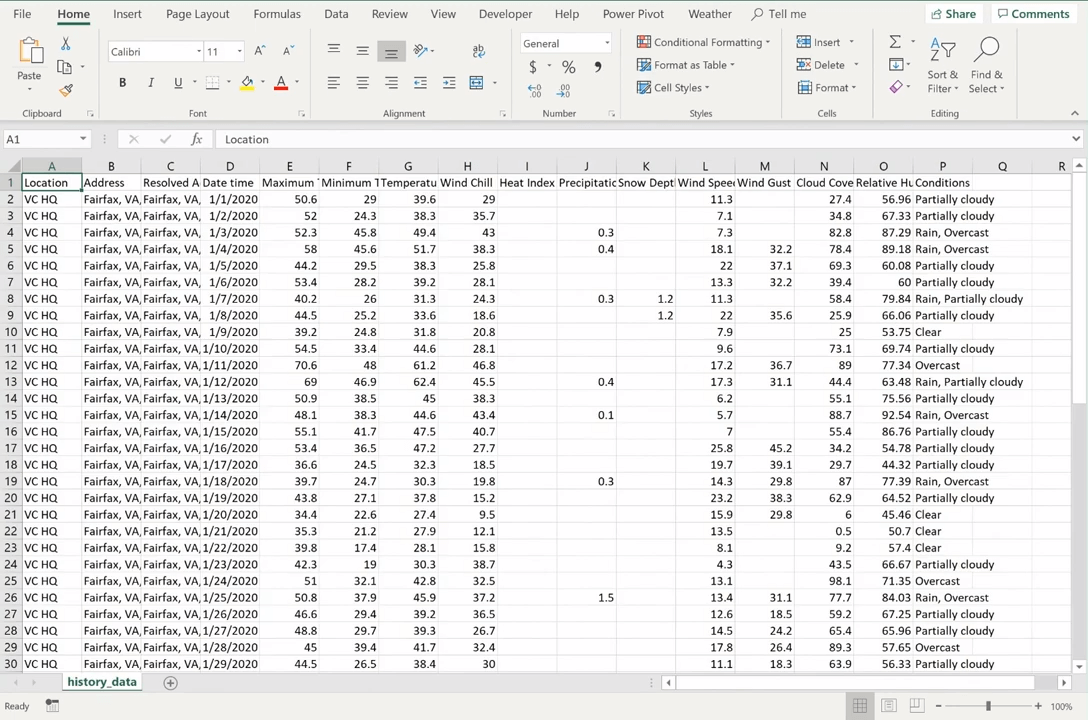How to download the weather forecast for all US ZIP Codes
US ZIP Codes act like postal codes in other countries – they provide an easy and structured way to locate an address within a city and state. They are easy to remember and provide a reasonably precise geographical location. This makes them valuable for businesses and other organizations that want to collect information about their …
Continue reading “How to download the weather forecast for all US ZIP Codes”
How can I download weather forecast data as a CSV file?
In this article, we will show you how to easily download forecast weather data as a standard CSV file that can be imported into thousands of data analysis and storage applications such as business intelligence systems, visualization tools, statistical analysis packages, and databases. If you would like to download weather history data as a CSV, …
Continue reading “How can I download weather forecast data as a CSV file?”
How to use cURL to download weather data
Visual Crossing’s weather Query Builder makes it easy to build weather API queries and download result data for any date or time period. However, in some use cases you need to move beyond a web-based interface and automate your weather data retrieval. While this is easy to do if you are a coder or scripter, …
How to download weather forecast data as a Microsoft Excel Workbook
In this article, I’m going to show you how to download weather forecast for any worldwide location data as a standard Microsoft Excel file. Quick Steps to Get Started Now Sign up for a free Visual Crossing Weather account here: https://www.visualcrossing.com/weather/weather-data-services Enter the location(s) for your analysis and select the date or date range that interests …
Continue reading “How to download weather forecast data as a Microsoft Excel Workbook”
How can I download weather history data as a CSV file?
How to Download Weather History Data as a CSV File
Learn to download weather history data as a CSV file with our easy tutorial. Get accurate CSV historical weather information for your needs!
How to Build a Weather Dataset for Download, Bulk Import or Scheduling
If you have ever tried to download weather data for your specific location(s), timeframe and format needs you will know that it is a challenging exercise. Most of the time the solution is for you use the API to build a script or using coding to create this set. This creates additional cost, time and …
Continue reading “How to Build a Weather Dataset for Download, Bulk Import or Scheduling”
How to download weather data for multiple locations
Downloading weather data for multiple locations in CSV, Excel, or JSON format is easy using our Query Builder page. In this guide, we will walk through the process of uploading a file of location or pasting in CSV data from the clipboard, composing a weather query, previewing weather data for these locations, and then downloading …
Continue reading “How to download weather data for multiple locations”
How to Build an Artificially Intelligent Chatbot using the Microsoft Bot Framework and the Visual Crossing Weather API
This article will describe how to integrate the Microsoft Bot Framework with a weather API that enables the development of smart, responsive bots that can deliver real-time weather updates. This guide will take you through the process of setting up your bot using conversational language understanding (CLU), integrating it with a weather API, and …
How to Build a Weather App
From sourcing accurate data to implementing user-friendly interfaces, discover step-by-step instructions and best practices to build a weather app.
How to use Python and Pandas to join historical weather data to road accident data
I am currently investigating the relationship between weather conditions and accidents by using a dataset of road accidents in Fairfax County, Virginia obtained from the Virginia Department of Motor Vehicles. The first step to perform the analysis is to combine the accident data with the historical weather conditions. In this article, we will discuss how …








